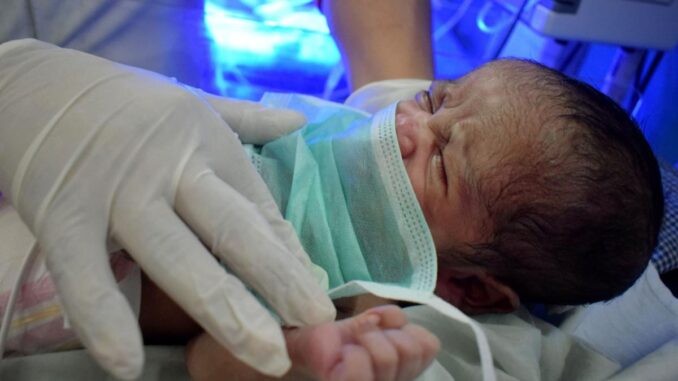
In News
ICMR has issued guidelines for Management in Pregnant women with COVID-19.
In Detail
- The Indian Council of Medical Research (ICMR) has evidence to suggest that pregnant women can transmit novel coronavirus to her unborn baby.
- ICMR issued general guidelines to obstetric healthcare providers on the consequences of vertical transmission of COVID-19 and how necessary precautions are to be taken.
- The guidelines say that the obstetric healthcare practitioners should follow national health protocol.
- They must notify COVID-19 cases and consider antenatal and postnatal needs of mother and baby.
- The guidelines also mention the appropriate use and handling of PPE during labor, where chances of infection transmission are high when the staff comes into contact with the body fluids.
- ICMR recommends international norms that the baby should be isolated after birth.
- ICMR suggests that the facilities should temporarily separate the newborn baby from a mother who is a COVID-19 infected patient or a PUI as the transmission after birth through contact with infectious respiratory secretions is a major risk.
- On April 3, India’s first baby with COVID-19 positive parents was born at AIIMS. Both the father and the mother of the baby were COVID-19 positive patients, but the baby is COVID-19 negative.
Vertical Transmission
- Vertical transmission refers to the transmission of infection directly from mother to her child.
- The transmission might occur before birth (antennal stage), weeks immediately before or after birth (perinatal stage) or after birth. This transmission can occur through breast milk, placenta, or through direct contact.
- HIV, Zika, Rubella, Toxoplasma gondii and Herpes are vertical transmission diseases.
- Concerning COVID-19 vertical transmission, ICMR suggests that transmission is apparent.
Scientific Evidence on Vertical Transmission
- Researchers from Wuhan University examined nine pregnant women on February 12. The study shows that the characteristics of COVID-19 pneumonia in pregnant women and non-pregnant adult patients were similar. This shows that there is no evidence for intrauterine infection caused by vertical transmission.
- On February 22 at Renmin Hospital, Wuhan, a woman with COVID-19 delivered a baby girl who was tested positive. The researchers believe that the infection happened soon after birth or in the womb. The lab results of the baby show liver injury and inflammation which indirectly supports the possibility of vertical transmission.
- In North Middlesex hospital in Enfield, a woman with COVID-19 gave birth to a baby who had tested positive. But the doctors where uncertain whether the infection was a result of vertical transmission or caught after birth.
- The US Center for Disease Control and Prevention says that the vertical transmission of the disease is not possible. Only a few babies are tested positive and it is not known whether the babies got infected before or after the birth as the virus is not present in amniotic fluid, breast milk or other samples.
Conclusion
The transmission of infection through vertical transmission is probable even though the proportion of pregnancies affected and the significance of neonate is not yet known.

Leave a Reply
You must be logged in to post a comment.